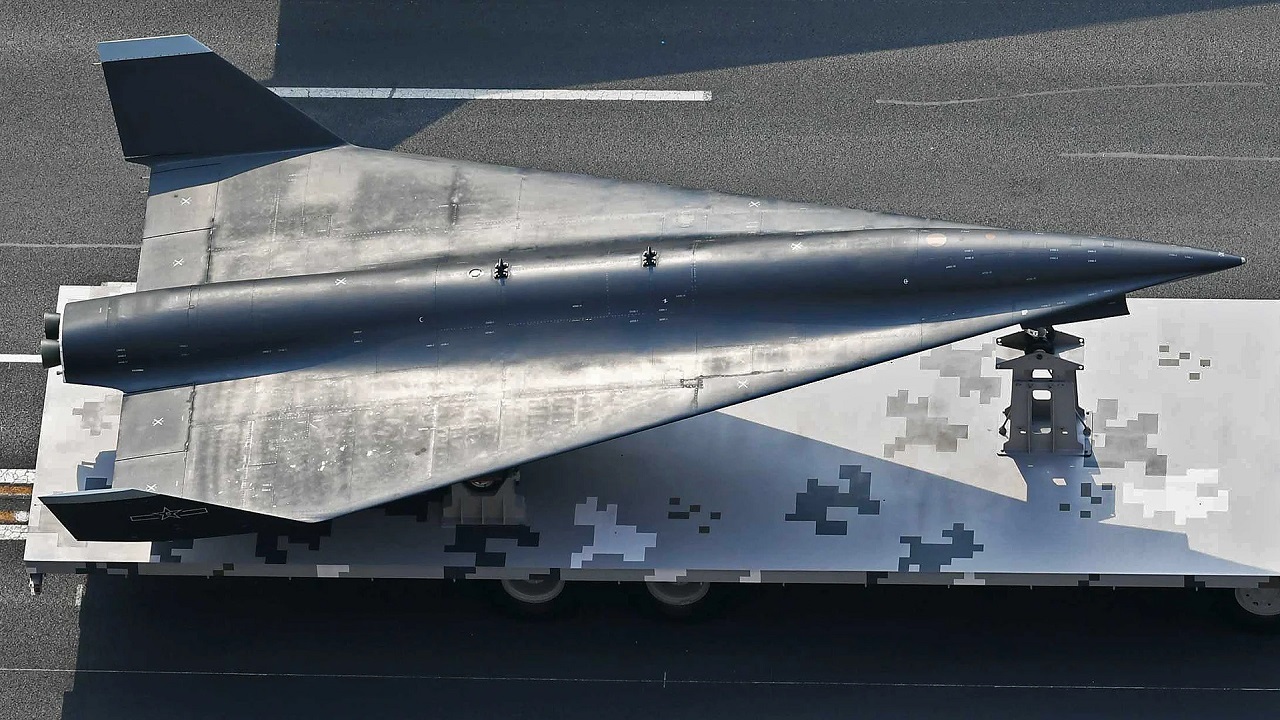A Chinese multi-role drone was recently seen on display, and it has tongues wagging about what it could be used for. For the second year in a row, the Wuzhen-8 (WZ-8) unmanned vehicle was featured at a major air expo. This drone is a mystery because of the speculation on whether it is a reconnaissance or attack remotely-piloted aircraft, or both.
The Wuzhen-8 may go as fast as MACH 3 or better, and it could even have a surprising “kamikaze” role that would endanger American fighters by crashing into them.
Multi-mission Capabilities
Wuzhen, however, means “unmanned reconnaissance,” so that mission may be its primary focus. It could fly undetected deep into contested air space and return to base with intelligence and surveillance data. The WZ-8 could also be utilized for targeting and bomb damage assessment. This gives the People’s Liberation Army Air Force (PLAAF) many options for use cases, if preliminary reports can be believed.
Ultra-long Range Boosted By Bomber “Mothership”
The drone may have a range of 5,000 miles, which would allow it to reach targets in the East and South China Seas and even into the western Pacific Ocean. The unmanned aircraft could even be carried by an H-6N bomber, potentially increasing its range even further.
Fast Speed to Shake SAMs
The triangular-shaped, arrow-like drone could potentially target other enemy airplanes or even aircraft carriers by serving in a “suicide” role. It is not clear how stealthy the drone is, but at such high-level supersonic speeds, it may be able to outrun missile defenses and surface-to-air missiles. To protect against the WZ-8, the U.S. Navy would have to depend on the Aegis Combat System to destroy the recon/combat drone before it could hit an escort ship or carrier.
Could It Take Out U.S. Stealth Fighters?
The WZ-8 could conceivably be used against other airplanes such as the F-35 and F-22, although sensors and radars should protect these airplanes from suicide drones, it still gives the PLAAF more attack options against enemy warplanes.
First Seen in 2019 and Subsequent Air Shows
The WZ-8 made its first appearance during a military parade in 2019 and was on display at the Zhuhai Air Show in 2021. It “lacks intakes and therefore an air-breathing engine to launch under its own power,” so it needs a “mothership” such as the H-6N to launch it from high altitude.
Guide for Carrier Killing Missiles
The aiming capabilities of the WZ-8 are notable because of the speed of the drone. The WZ-8 could provide target data to carrier-killing DF-21D and DF-26 anti-ship missiles without being detected by the carrier strike group.
Can the WZ-8 Reach Hypersonic Speeds?
The WZ-8 might be equipped with a scramjet engine, which would enable hypersonic flight above MACH 5. The PLAAF drone resembles the American-made D-21 unmanned craft that was discontinued during the Cold War. The D-21 flew recon missions over China from 1969 to 1971.
Intriguing Option for Chinese Air Force
While the WZ-8 has the intelligence, surveillance, and reconnaissance ability in addition to bomb damage assessment and targeting, the kamikaze option may be over-stated. It is not clear how the Chinese drone would be able to target one of the U.S. military’s stealth F-35s and F-22s. The WZ-8 also may not have completely developed its loitering ability, which would make its recon missions more difficult. But this drone, should it be produced in numbers and deployed in combat, could give the United States another UAV to worry about in the Indo-Pacific.
Expert Biography: Serving as 1945’s Defense and National Security Editor, Dr. Brent M. Eastwood is the author of Humans, Machines, and Data: Future Trends in Warfare. He is an Emerging Threats expert and former U.S. Army Infantry officer. You can follow him on Twitter @BMEastwood. He holds a Ph.D. in Political Science and Foreign Policy/ International Relations.

